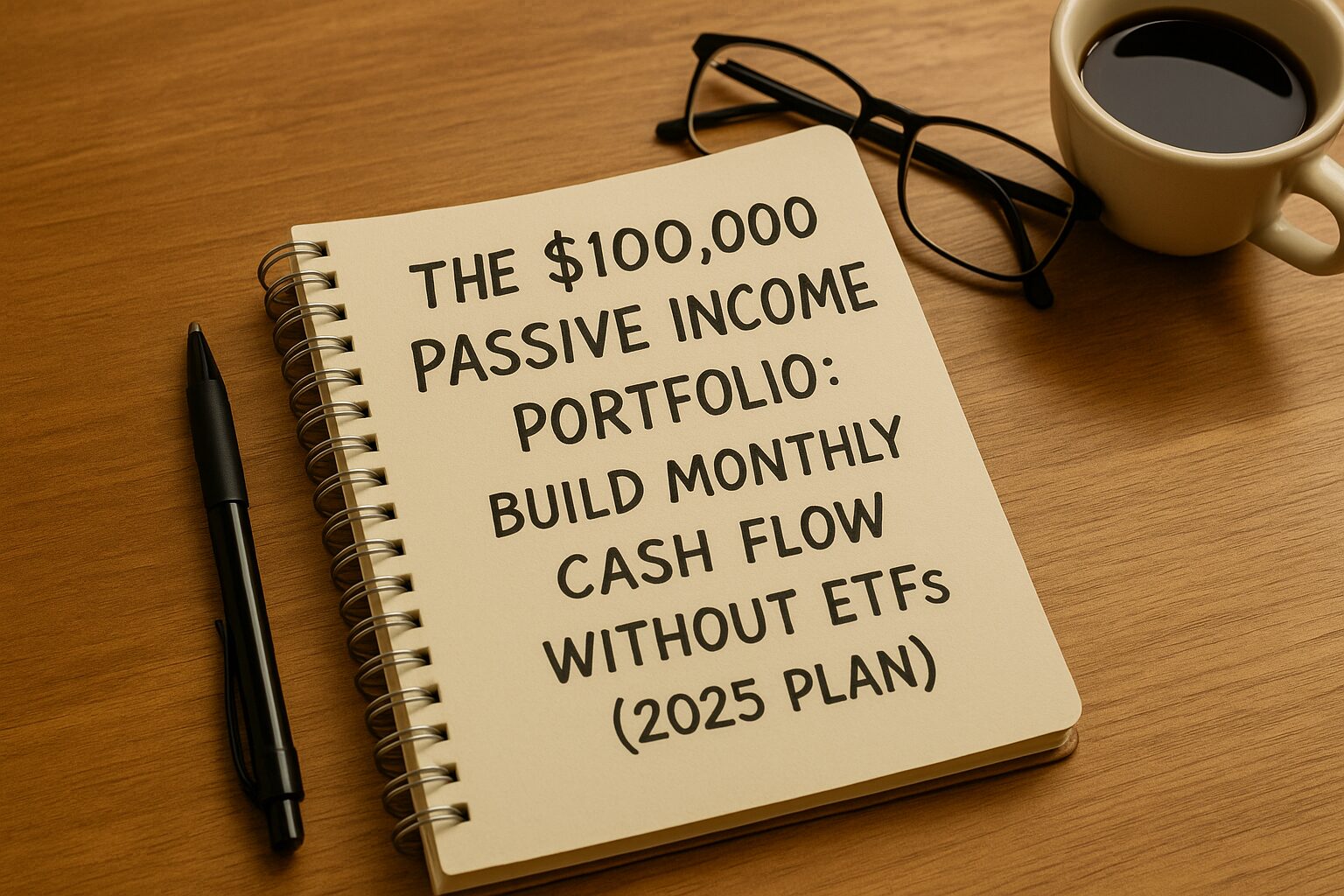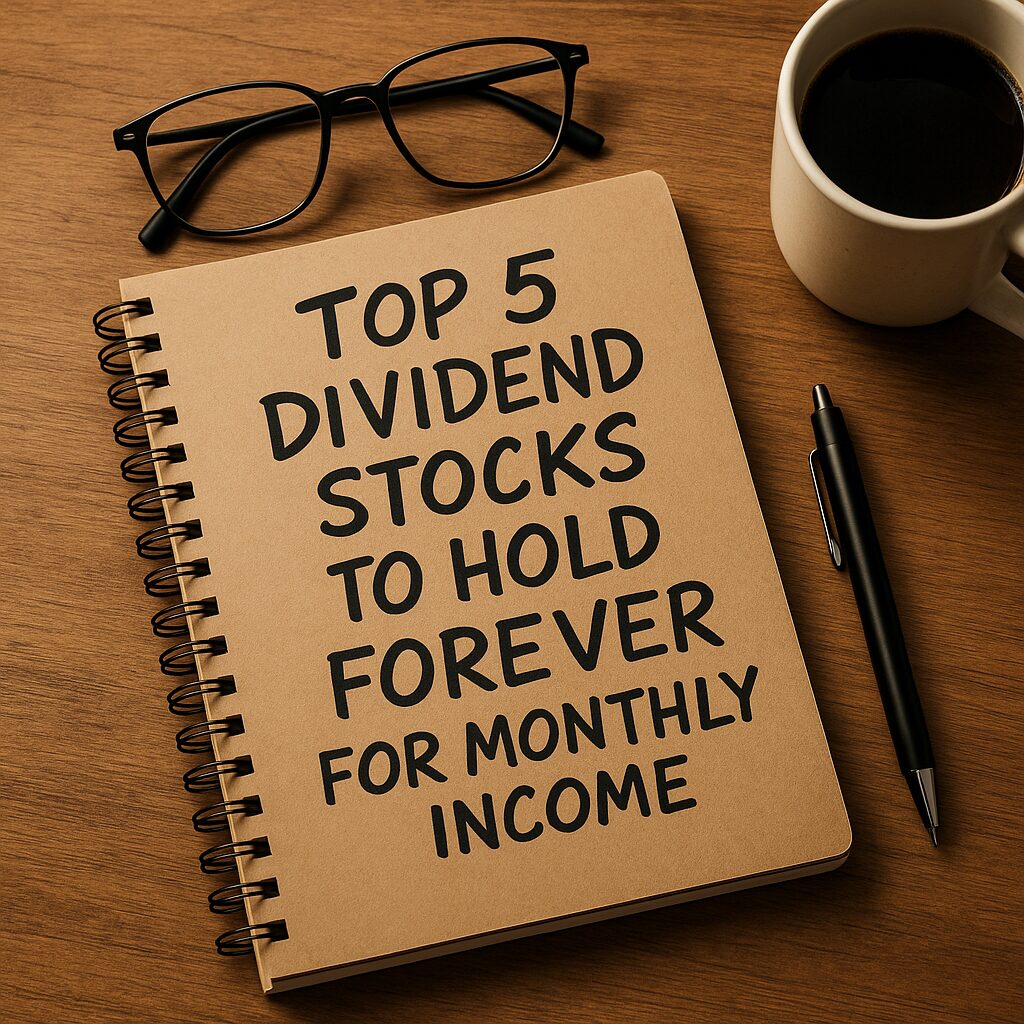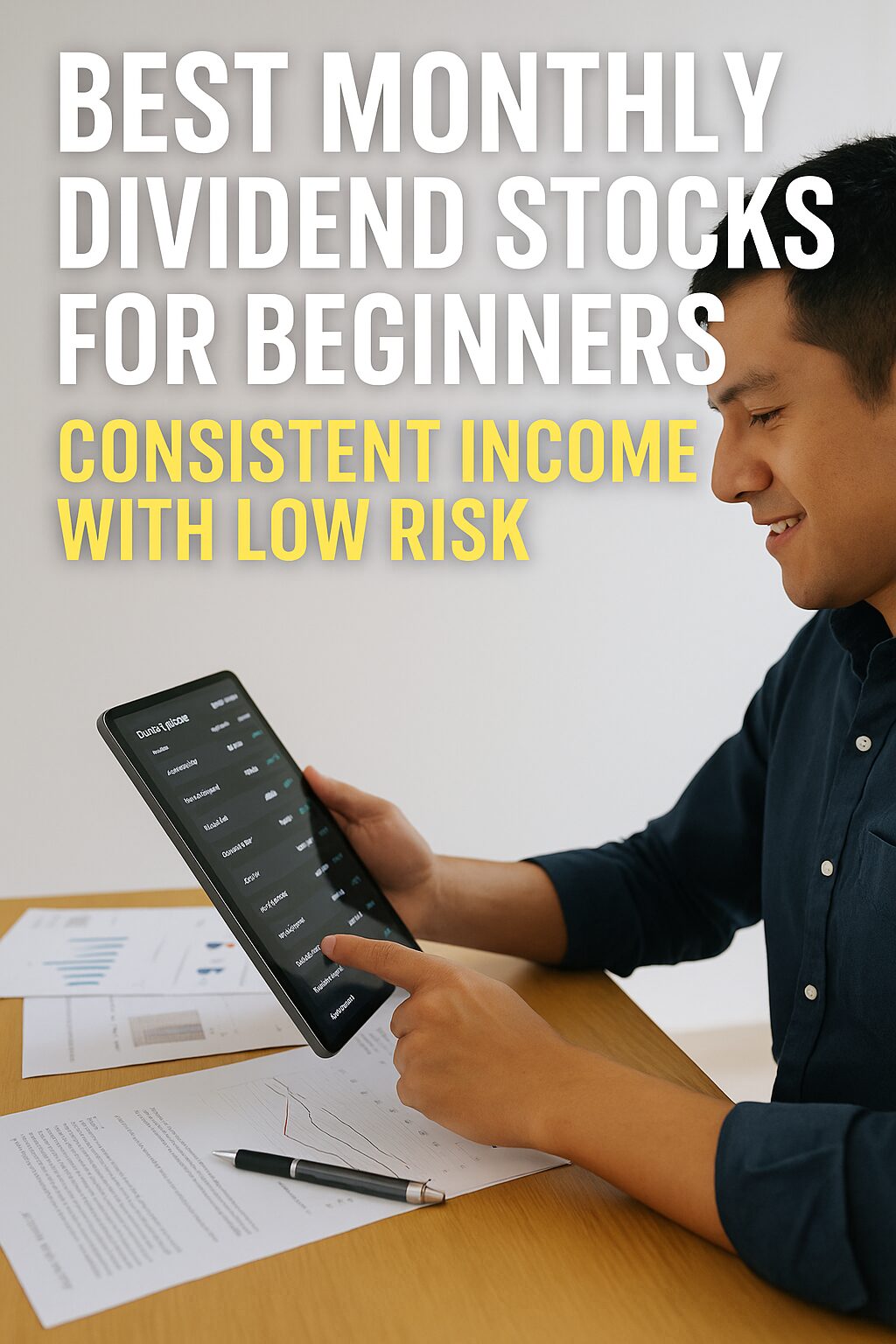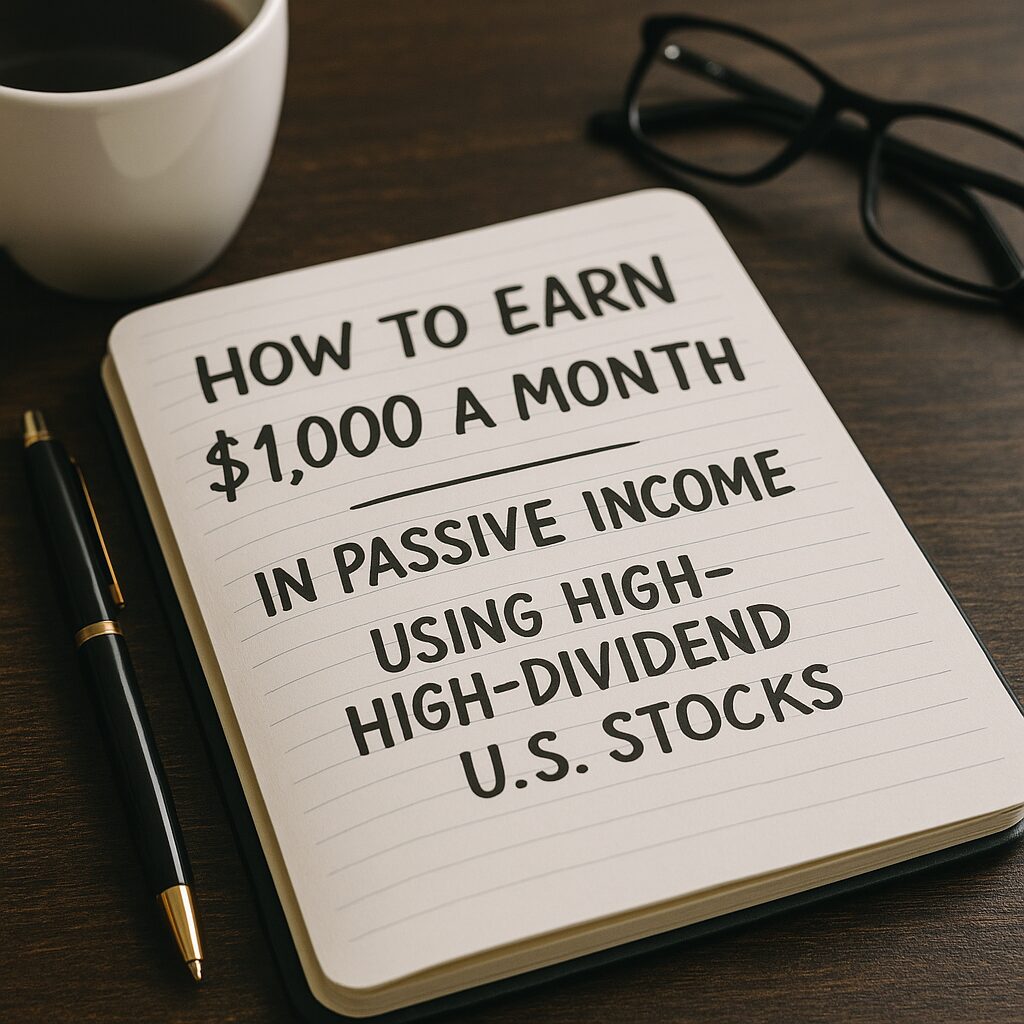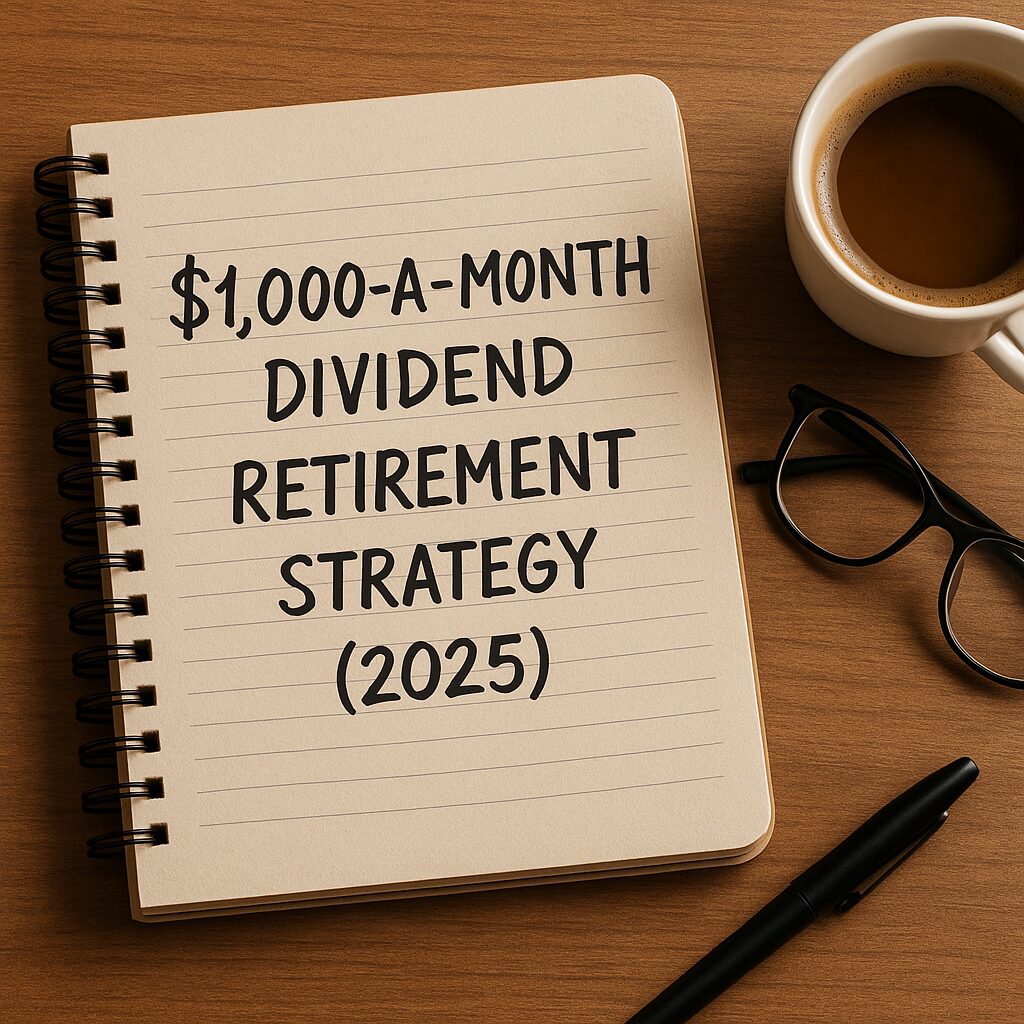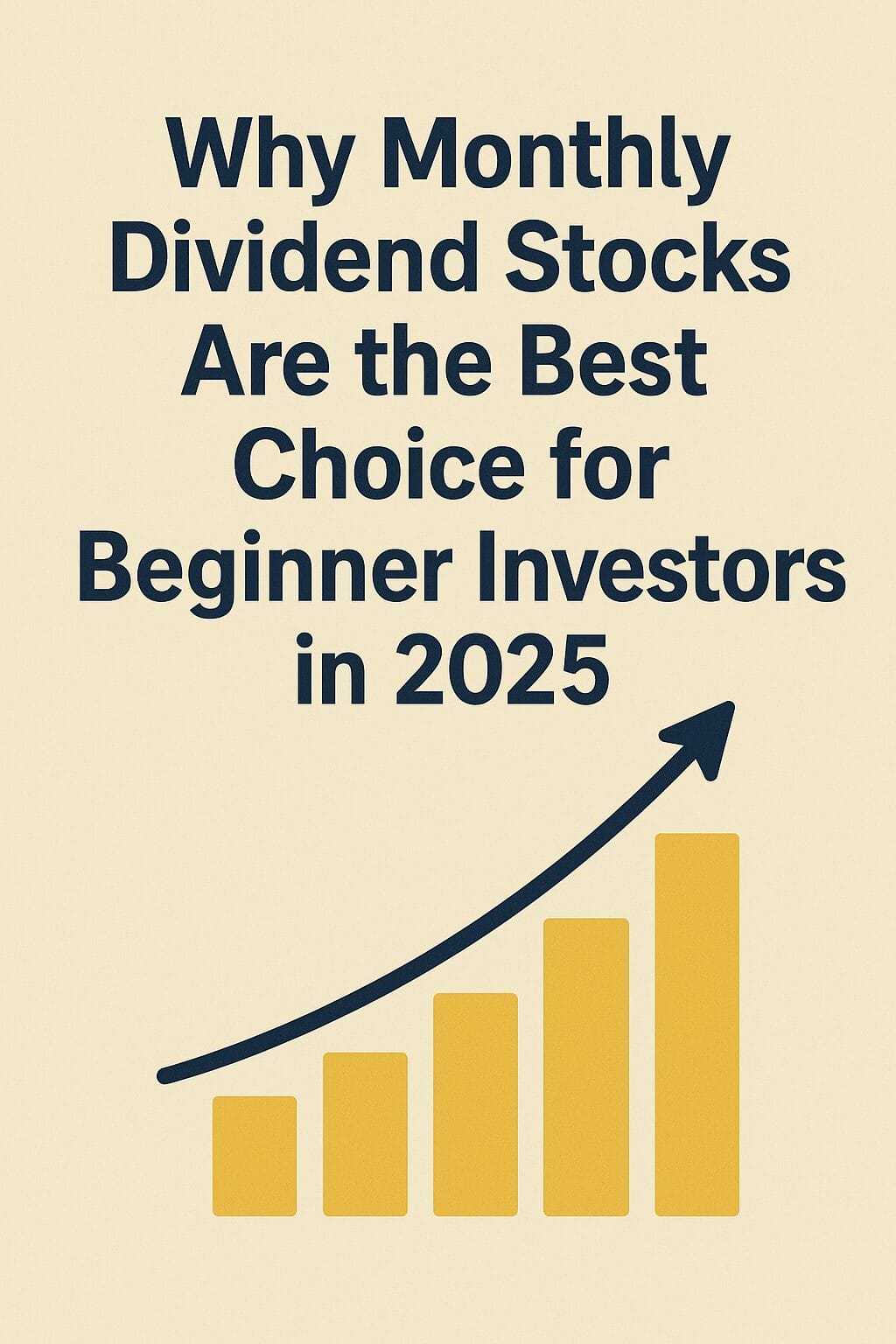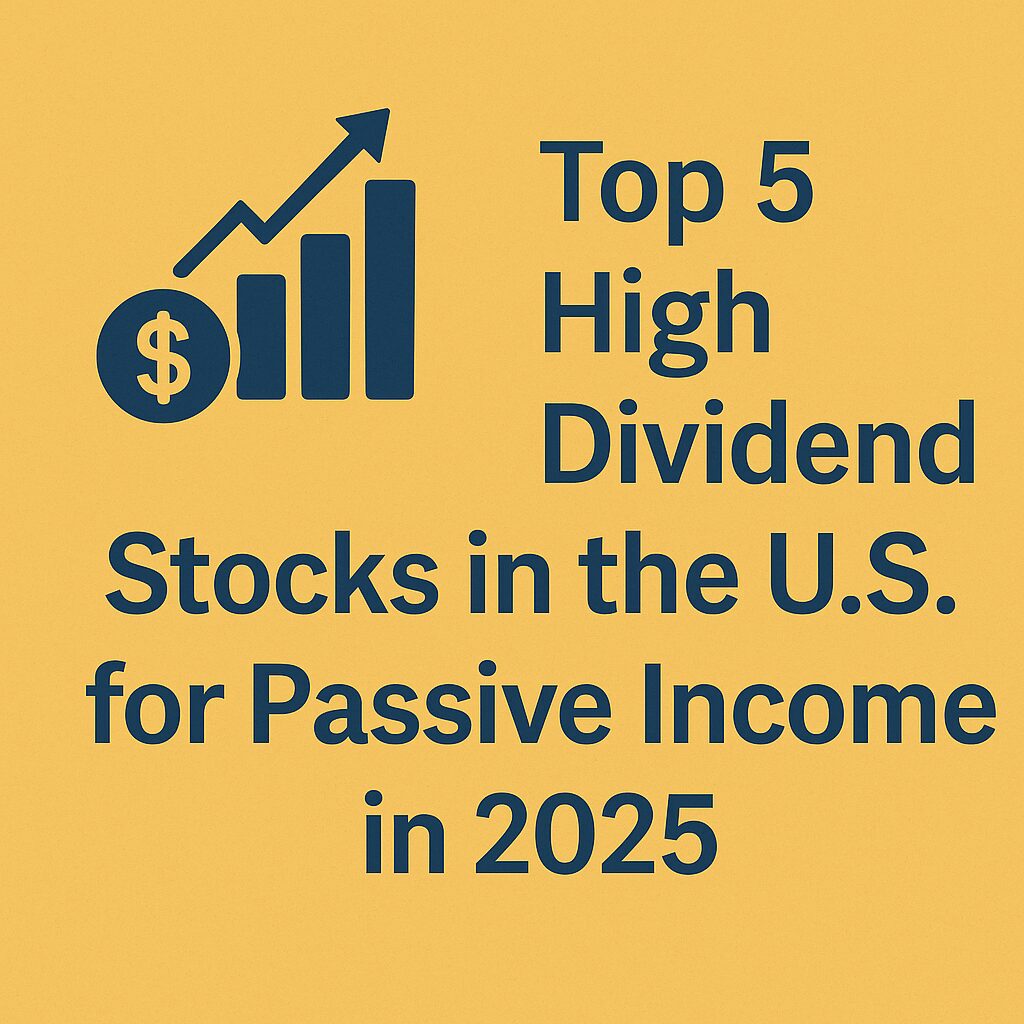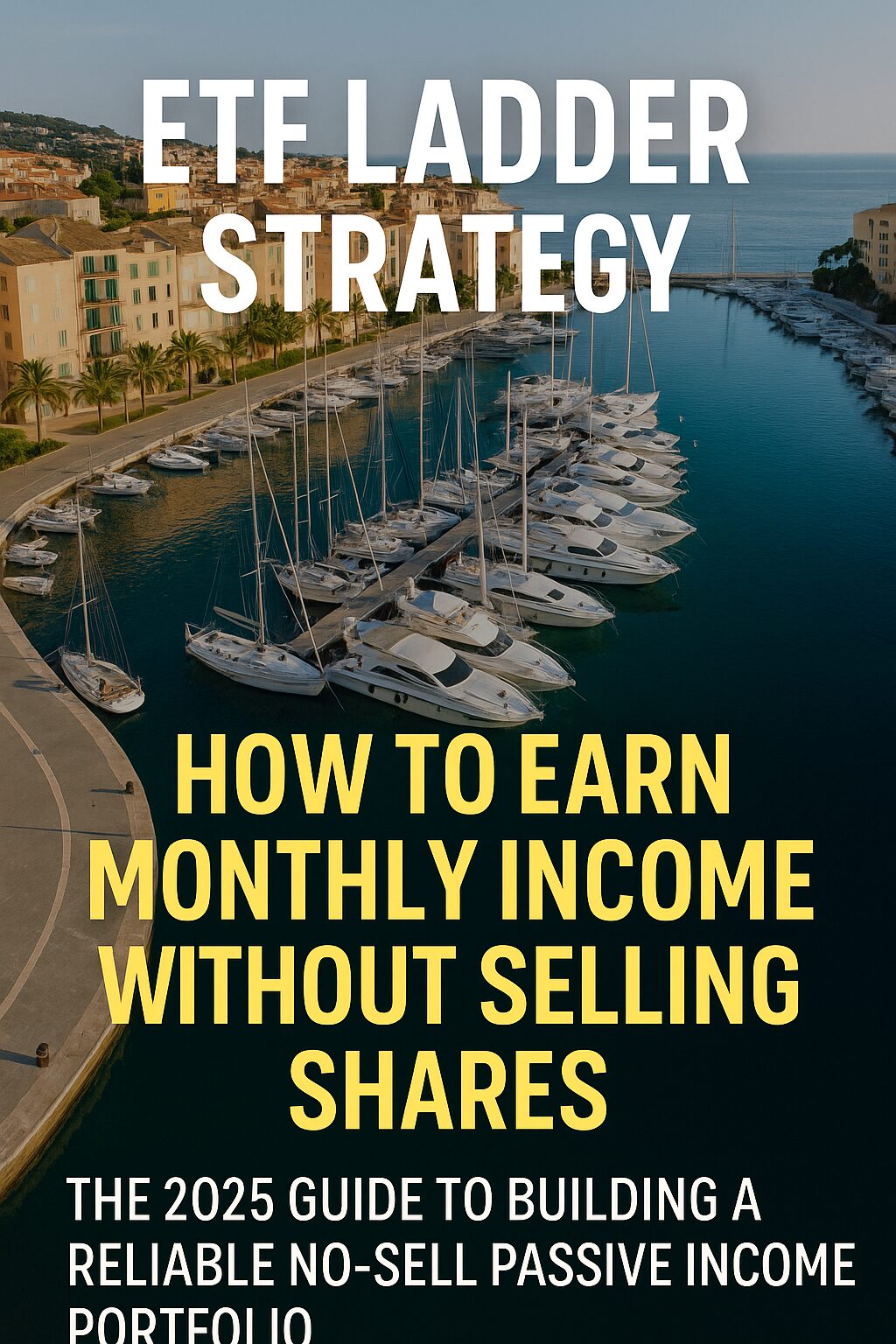Why Build a $100K Passive Income Portfolio?
Imagine earning income every month — without ever having to sell your stocks, worry about price swings, or manage rental properties. That’s the power of a well-built $100,000 passive income portfolio.
In this guide, you’ll learn how to generate steady monthly cash flow using only high-dividend U.S. stocks and BDCs, no ETFs required. We’ll show you the exact stocks, allocations, dividend calendar, and risk strategy — all based on real 2025 data.
Why No ETFs?
While ETFs are great for diversification, they come with limitations:
- Lack of payout control (you can’t choose when they pay)
- Expense ratios
- Lower yields due to built-in diversification
- Less visibility into holdings
This plan uses individual dividend stocks and monthly payers to build a more hands-on, customizable cash-flow engine.
Target: $100,000 Portfolio → $400–$600 Monthly Income
| Goal | Value |
|---|---|
| Total Capital | $100,000 |
| Target Yield | ~5.5–7.0% |
| Annual Income | $5,500–$7,000 |
| Monthly Average | ~$450–$580 |
We’ll optimize for monthly consistency, not just high yield.
Core Principles
- Monthly payout schedule (dividend ladder)
- Diversified sectors (avoid over-concentration)
- Reliable companies with stable payout history
- Dividend reinvestment optional — based on life stage
- No trading — this is a set-it-and-earn plan
Portfolio Breakdown: 6 Stocks (100% Individual Equities)
| Stock | Allocation | Dividend Yield | Payout Frequency |
|---|---|---|---|
| Realty Income (O) | $20,000 | 5.6% | Monthly |
| Main Street Capital (MAIN) | $15,000 | 6.8% | Monthly |
| AT&T (T) | $15,000 | 6.2% | Quarterly (Feb/May/Aug/Nov) |
| Johnson & Johnson (JNJ) | $15,000 | 3.1% | Quarterly (Mar/Jun/Sep/Dec) |
| Chevron (CVX) | $15,000 | 4.2% | Quarterly (Mar/Jun/Sep/Dec) |
| Starwood Property Trust (STWD) | $20,000 | 9.4% | Quarterly (Mar/Jun/Sep/Dec) |
Stock 1: Realty Income (O)
- Yield: ~5.6%
- Sector: REIT
- Why it’s here: Reliable monthly payer, consistent growth, great for base income.
Stock 2: Main Street Capital (MAIN)
- Yield: ~6.8%
- Sector: BDC
- Why it’s here: High-yielding, monthly payouts, bonus dividends possible.
Stock 3: AT&T (T)
- Yield: ~6.2%
- Sector: Telecom
- Why it’s here: High yield, quarterly cash flow, stable utility-like cash flows.
Stock 4: Johnson & Johnson (JNJ)
- Yield: ~3.1%
- Sector: Healthcare
- Why it’s here: Dividend king, safety anchor, lower yield but highly stable.
Stock 5: Chevron (CVX)
- Yield: ~4.2%
- Sector: Energy
- Why it’s here: Oil sector exposure, strong dividends even during cycles.
Stock 6: Starwood Property Trust (STWD)
- Yield: ~9.4%
- Sector: Mortgage REIT
- Why it’s here: Boosts overall yield. High-risk/high-return allocation.
Projected Income by Stock
| Stock | Annual Income | Monthly Equivalent |
|---|---|---|
| O | $1,120 | $93 |
| MAIN | $1,020 | $85 |
| T | $930 | $78 |
| JNJ | $465 | $39 |
| CVX | $630 | $52 |
| STWD | $1,880 | $157 |
| Total | $6,045/year | ~$504/month |
Monthly Dividend Ladder
| Month | Payers |
|---|---|
| Jan | O, MAIN |
| Feb | T, O, MAIN |
| Mar | JNJ, CVX, STWD, O, MAIN |
| Apr | O, MAIN |
| May | T, O, MAIN |
| Jun | JNJ, CVX, STWD, O, MAIN |
| Jul | O, MAIN |
| Aug | T, O, MAIN |
| Sep | JNJ, CVX, STWD, O, MAIN |
| Oct | O, MAIN |
| Nov | T, O, MAIN |
| Dec | JNJ, CVX, STWD, O, MAIN |
You’ll receive dividends every month — often from multiple sources.
DRIP vs. Cash Flow
- Early-stage investors → Consider DRIP for compounding
- Near retirement → Set to cash payouts
- Most brokers let you choose per stock
Tools to Automate the System
- Broker: M1 Finance, Fidelity, Interactive Brokers
- Tracking: TrackYourDividends, Google Sheets
- DRIP setup: Turn on per stock
- Auto-deposit: Set monthly contributions if still growing
Key Risks & How to Manage Them
| Risk | Mitigation |
|---|---|
| Yield trap (e.g. STWD) | Limit to 20% of portfolio |
| Sector downturn | Diversify (REIT, BDC, energy, healthcare) |
| Dividend cut | Monitor payout ratios + earnings |
| Inflation | Reinvest to outpace over time |
Can You Start with Less?
Yes. You can begin with:
- $1,000: Buy fractional shares
- $10,000: Replicate 1/10 of the plan
- Scale gradually using auto-invest
- Reinvest dividends for snowball growth
Exit Strategy: When to Adjust?
- When you retire → Turn off DRIP
- If a stock cuts dividends → Replace with stable payer
- If capital grows → Add diversification or increase monthly payouts
Final Thoughts
This portfolio is built to:
- Pay you every single month
- Require zero selling
- Grow organically with or without contributions
- Scale with just $100,000 (or less to start)
You don’t need an ETF.
You don’t need a financial advisor.
You just need a plan, six stocks, and consistency.
This is the $100K portfolio that pays you to live. Start building it today — one paycheck at a time.
